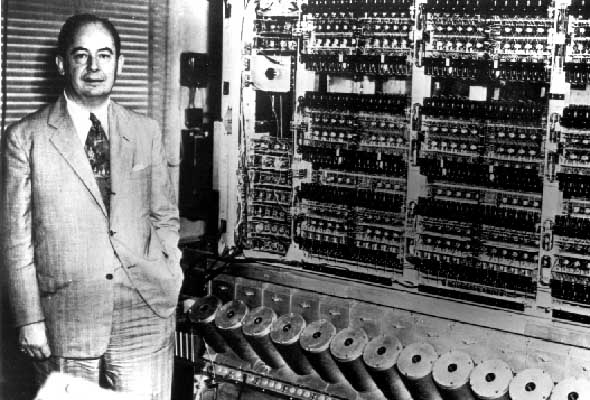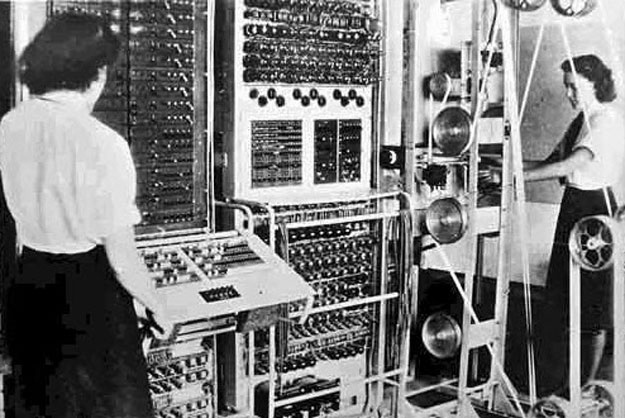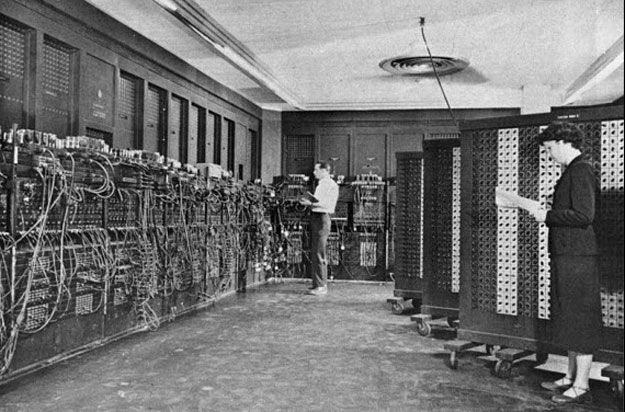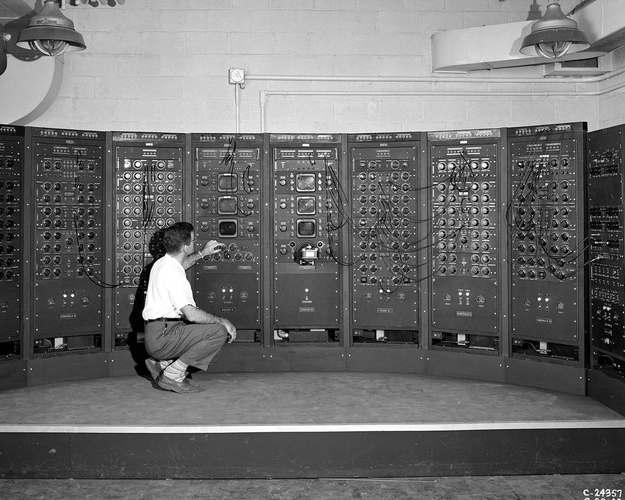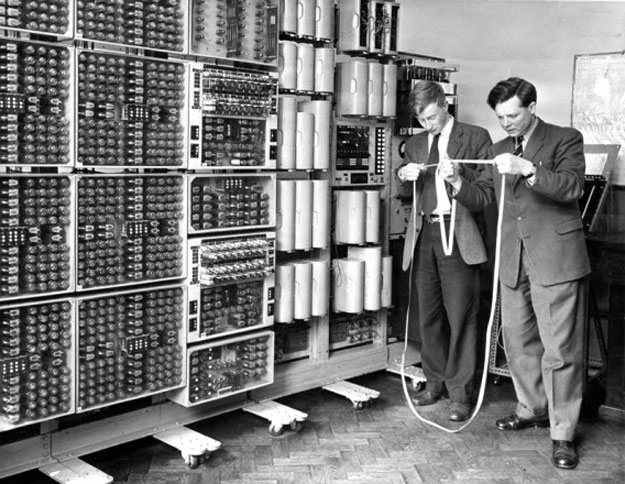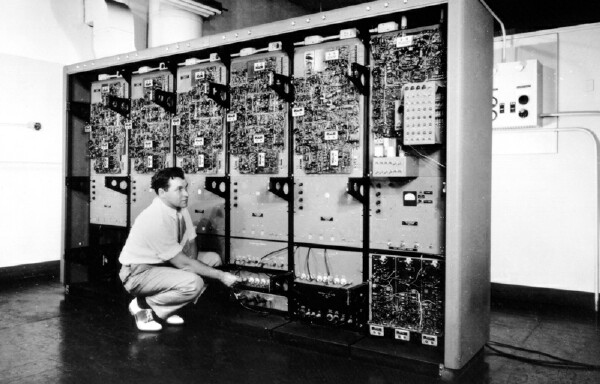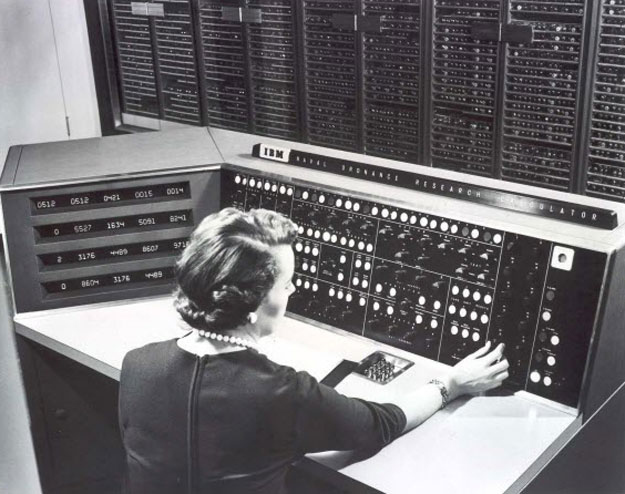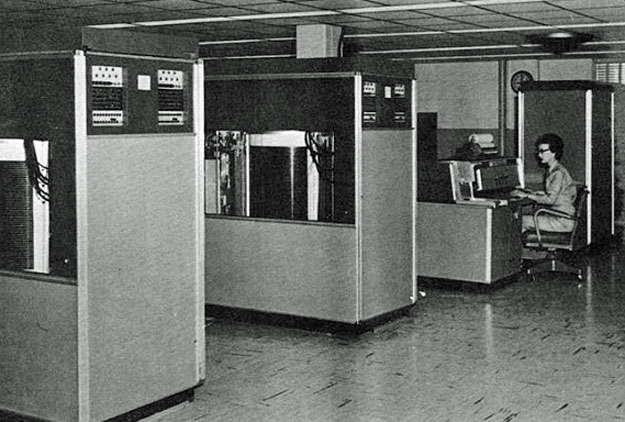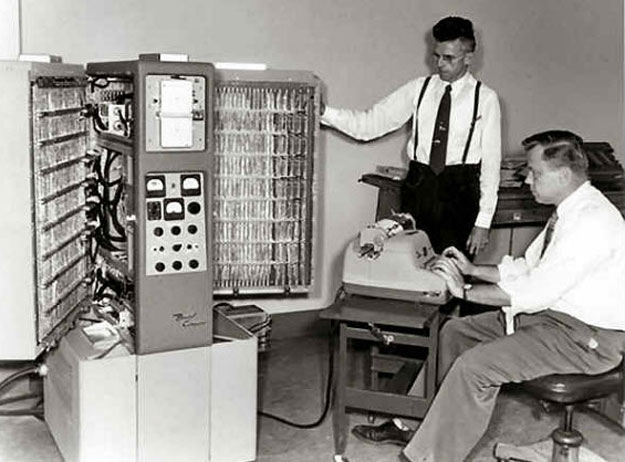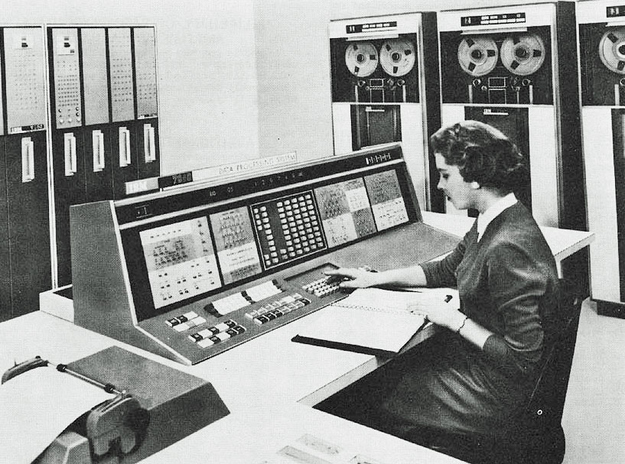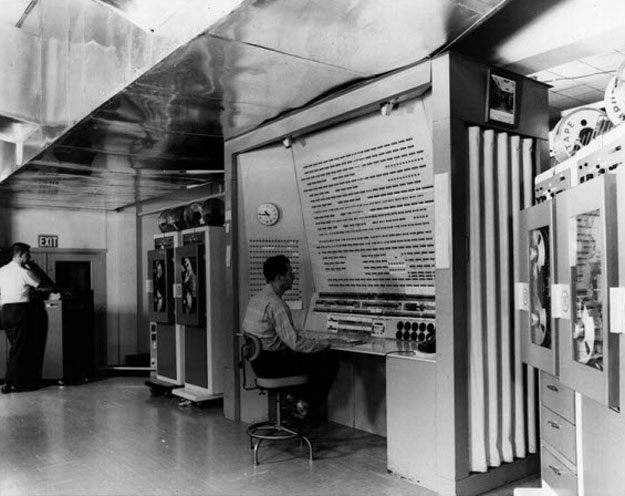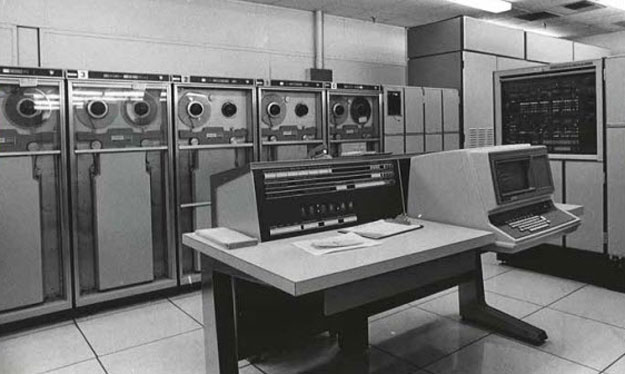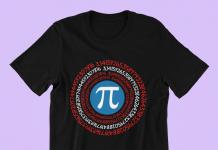As time moves forward, are computers and similar devices are getting smaller, and it’s hard to comprehend, especially when you weren’t alive back in the 40’s, 50’s and 60’s, that computers that wouldn’t store 1MB of memory were the size of entire rooms.
Harvard Mark I (1944)
The Mark I was an electro-mechanical computer devised by Howard H. Aiken, built at IBM and shipped to Harvard in February 1944. It began computations for the U.S. Navy Bureau of Ships in May and was officially presented to the university on August 7, 1944.
The Colossus (1944)
The world’s first electronic digital computer that was at all programmable, used by the British during World War II to help in the cryptanalysis of the Lorenz cipher. Colossus used thermionic valves (vacuum tubes) to perform Boolean operations and calculations.
ENIAC (1946)
The Electronic Numerical Integrator And Computer, the first electronic general-purpose computer. It was Turing-complete, digital, and capable of being reprogrammed to solve a full range of computing problems, and was designed to calculate artillery firing tables for the United States Army’s Ballistic Research Laboratory.
Analog Computing Machine (1949)
An early version of the modern computer, is located in the then-Engine Research Building at the Lewis Flight Propulsion Laboratory in Cleveland, Ohio, which is now part of NASA.
The WITCH (1951)
Also known as the Harwell Computer and later as the Wolverhampton Instrument for Teaching Computing from Harwell, and was used at the Atomic Energy Research Establishment in Harwell. It used dekatrons for volatile memory, similar to RAM in a modern computer, and paper tape for input and program storage.
Whirlwind I
A Cold War air defense computer system developed by the MIT Servomechanisms Laboratory for the U.S. Navy. It is the first computer that operated in real-time, used video displays for output, and the first that was not simply an electronic replacement of older mechanical systems. Its development indirectly led to almost all business computers and minicomputers in the 1960s.
IBM NORC
The IBM Naval Ordnance Research Calculator was a one-of-a-kind first-generation vacuum tube computer built by IBM for the United States Navy’s Bureau of Ordnance. It went into service in December 1954 and was likely the most powerful computer at the time.
IBM 305 RAMAC
The first commercial computer that used a moving head hard disk drive for secondary storage. Its design was motivated by the need for real-time accounting in business. The first RAMAC to be used in the U.S. auto industry was installed at Chrysler’s MOPAR Division in 1957.
Bendix G-15
The Bendix was about 5 by 3 by 3 ft (1.5m by 1m by 1m) and weighed about 950 lb (450 kg). The base system, without peripherals, cost $49,500. A working model cost around $60,000. It could also be rented for $1,485 per month. It was meant for scientific and industrial markets.
IBM 7080
A variable word length BCD transistor computer in the IBM 700/7000 series commercial architecture line, introduced in August 1961, that provided an upgrade path from the vacuum tube IBM 705 computer.
BRLESC I
The Ballistic Research Laboratories Electronic Scientific Computer was a first-generation electronic computer built by the United States Army’s Ballistics Research Laboratory (BRL) at Aberdeen Proving Ground with assistance from the National Institute of Standards and Technology (NIST), and was designed to take over the computational workload of EDVAC and ORDVAC, which themselves were successors of ENIAC. was designed primarily for scientific and military tasks requiring high precision and high computational speed, such as ballistics problems, army logistical problems, and weapons systems evaluations.
UNIVAC 1108
The UNIVAC 1108 stored a then unimaginable 1MB of data. Just as the first UNIVAC 1108 systems were being delivered in 1965, Sperry Rand announced the UNIVAC 1108 II (also known as the UNIVAC 1108A) which had support for multiprocessing: up to three CPUs, four memory banks totaling 262,144 words, and two independent programmable input/output controllers (IOCs). With everything busy, five activities could be going on at the same moment: three programs running in the CPUs and two input/output processes in the IOCs. It was the first multiprocessor machine in the series, capable of expansion to three CPUs and two IOCs (Input/Output Control Units).
On the other hand, there are some incredible things that come in smaller sizes, like these 24 Geeky Computer Mice Designs and Concepts.

